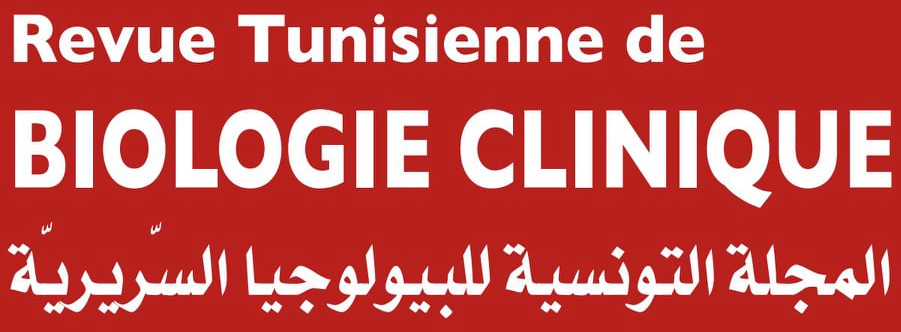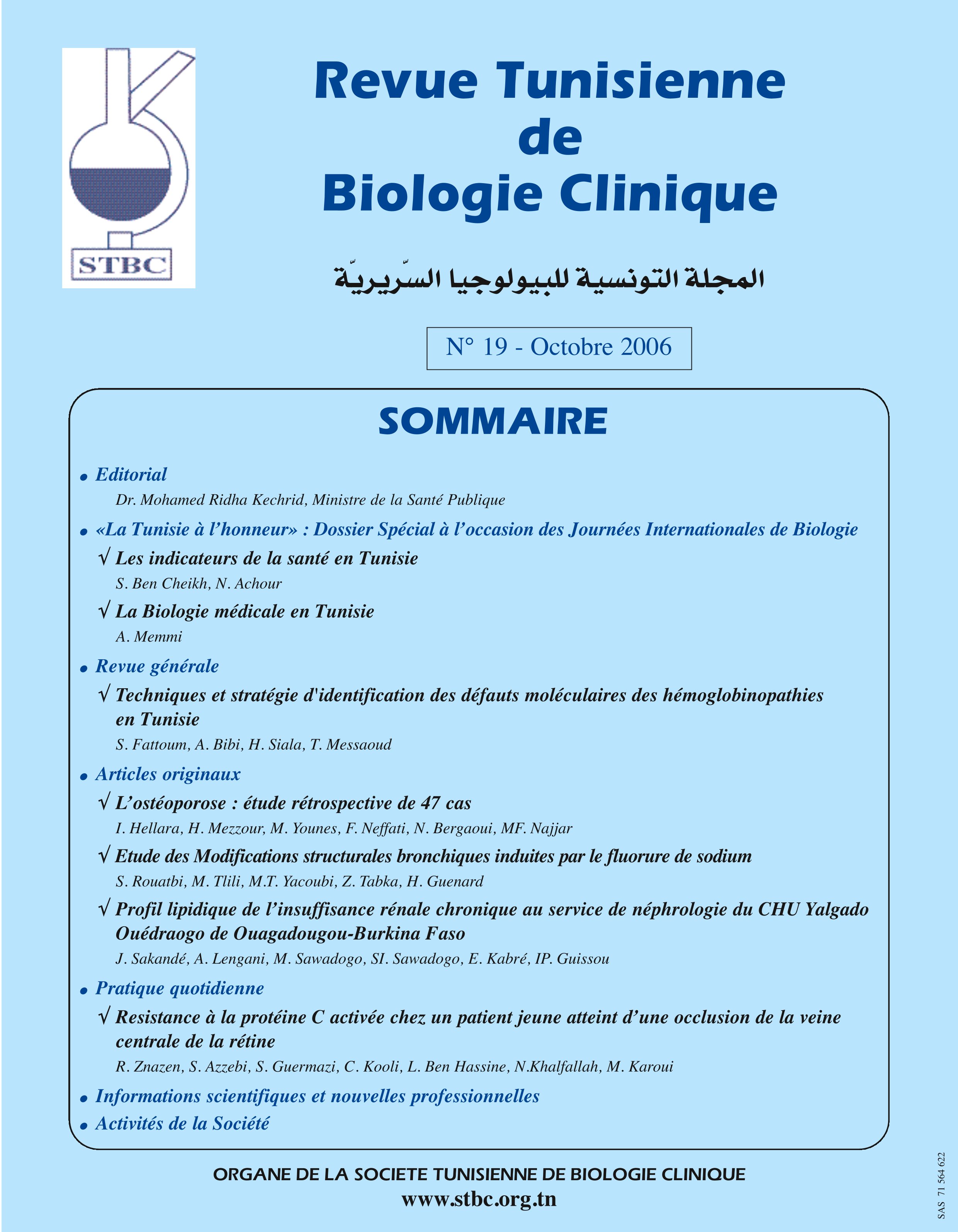Résumé
Les hémoglobinopathies sont les maladies monogéniques les plus répandues dans le monde. Les thalassémies et la drépanocytose en sont les manifestations les plus fréquentes en Tunisie. Devant l'extrême hétérogénéité des défauts moléculaires responsables des hémoglobinopathies (plus de 400 mutations touchant les gènes α et β-globine), une large batterie de techniques de biologie moléculaire a été développée pour l'identification et la caractérisation génotypique de ces maladies. Les techniques sont basées sur l'amplification de l'ADN génomique par réaction de polymérisation en chaîne et incluent la digestion par les enzymes de restriction, le reverse dot blot et l’amplification allèle spécifique (ARMS) pour les mutations connues. L'électrophorèse en gradient de gel dénaturant et le séquençage de l'ADN sont utilisés pour les mutations non connues. La Gap PCR est utilisée essentiellement pour identifier les grandes délétions. La stratégie utilisée dans la caractérisation moléculaire des mutations débute par un tri préalable basé sur les données phénotypiques du cas étudié. Le choix des mutations testées en priorité est dicté par le spectre des mutations préalablement dépeint dans la population tunisienne. C'est ainsi que les mutations cd 39 (C◊T) et IVS1-110 (G◊A) qui constituent près de 70% de l'ensemble des mutations β-thalassémiques sont recherchées en première intention chez les porteurs du trait β-thalassémique. De même la délétion - α3.7 est la première recherchée dans les α-thalassémies. Cette stratégie appliquée dans notre laboratoire nous a permis d'identifier près de 97.7% des défauts moléculaires responsables d’hémoglobinopathies. Elle offre ainsi la possibilité d'affiner le conseil génétique et de répondre d’une manière fiable et plus rapide aux demandes croissantes du diagnostic prénatal.

Ce travail est disponible sous la licence Creative Commons Attribution 4.0 International .
(c) Tous droits réservés S. FATTOUM, A. BIBI, H. SIALA, T. MESSAOUD 2006

